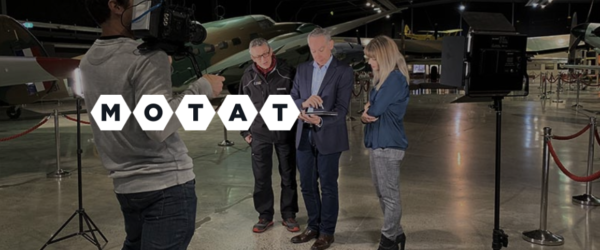How to count visitors at your attraction through footfall
- In Visitation, Visitation Data, Visualisations
- Articles
- 5 min read
Alongside ticketing and membership, footfall – the metric of measuring people who pass into a space – is one of the most important metrics to manage in the visitor attraction. It can be used to see how many visitors we receive, how many convert into an activity, how many make it into a space such as a café or shop – data providing a foundation to predict and analyze visitor behavior, even for more advanced purposes such as queue and capacity management. It’s a metric which comes with complexities around technology choices, hardware positioning and maintenance support. Here, we cover the basics.

What technology solutions exist?
Other than the manual clicker, footfall counter technologies include turnstiles, beam break or laser, under path sensors and cameras. Though manufacturers differ, the same concepts apply for roads and carparks for attractions managing these as part of the premises. Though no method is perfect, automated sensors usually provide around a 20% improvement in count accuracy from manual clicking, usually resulting in a higher count. Of these methods, camera technologies provide a future proofed hardware investment for your venue’s onsite network to work with evolving technology, such as recent improvements in the accuracy of detecting adults versus children and wheelchair users, even amongst a group.
Some cautionary warnings – despite its enticing ability to detect demographics and other data, facial recognition remains impractical for most environments due to a combination of growing privacy concerns and the environmental complexity of having to isolate visitors’ faces front on, in close proximity. Additionally, given not all visitors carry a mobile device and the fact that this penetration rate often varies, WiFi and similar location technologies are not recommended as a basis for visitation counts.
Hardware and accessories selection will also depend on the spatial environment. Optimally, footfall cameras are placed directly overhead from a medium height ceiling or posted to sit just off an entrance wall, with good lighting and in areas free of hanging crowds. This won’t always be the case – for example, some measure areas will need to be outside in the elements or at different heights, or installation might be made harder by a desire to blend the equipment in with the attractions’ aesthetic. In these circumstances, hardware housing and other adaptations may be required.
What has become especially important for footfall counters is the ability of onsite hardware devices to transmit data in near real time, preferably via an Application Programming Interface (API), supporting flexible integration with the venue’s big data analytics solution. As well as requiring power (if not via battery), this also means these devices require connectivity (via Ethernet, WiFi or cellular), which may mean wiring implications for these services to the device’s location.

Getting an accurate count: quantity, placement and management of counters
When choosing how many devices to install and where, it is usually worthwhile to position an automated counter on each entrance, on any outdoor areas of significance (such as a garden area), to commercial zones, in high profile queues (on both queue entrance and exit) and to key activity conversion areas such as rollercoasters, exhibitions or event areas.
Each device’s installation location should be recorded and the device or a group of devices given an alias name to make it easy for data users to understand. After calibration, the device can also be tested for accuracy, and if desired, a scaling factor applied to adjust for any normal over or under counts. Devices may need to be grouped into easy to access queries, such as ‘commercial zones’. This configuration management to manage data integrity and transparency from footfall can all be achieved in Dexibit.
Over time, footfall device hardware accuracy can decline, or be interrupted. As well as keeping an eye on the numbers, an annual hardware inspection and quarterly accuracy test (even as simply as a 15 minute parallel clicker count) will avoid situations where hardware quietly misreports over time.
What next?
With all these methods, the core limitation of footfall data remains its pure count nature. To maximize insight about your visitors, augment these counts together with information such as dwell time, trail routes and repeat visit rates. By analyzing these metrics together, you can begin to translate what used to be isolated data points into insights that provide more detailed knowledge about visitor behavior.
In summary
- Select a counting solution that can provide a high accuracy footfall count – we recommend camera counting technology to future proof your venue.
- Pick hardware accessories that work with your spatial environment – ensuring that devices can work effectively, be installed easily and blend into your venue’s aesthetic.
- Ensure your technology solution can transmit data in near real time (via Ethernet, WiFi or cellular), allowing you to analyze data quickly and efficiently through a big data solution.
- Install devices at every entrance, areas of significance, commercial zones, high profile queues and key activity conversion areas (e.g. entrances to roller coasters or exhibitions).
- Manage your devices by recording their location or give a group of devices an alias name for easy data analysis.
- Make sure your devices are working – test them for accuracy and add a scaling factor if needed.
- Conduct hardware inspections and accuracy tests annually to avoid misreporting over time.
Footfall is just one of the important metrics you can capture and analyze at your attraction. You might be surprised at what types of data your attraction is already collecting – if you think your organization isn’t collecting much, look again.
Want to learn more about Dexibit?
Talk to one of our expert team about your vision to discover your data strategy and see Dexibit in action.







